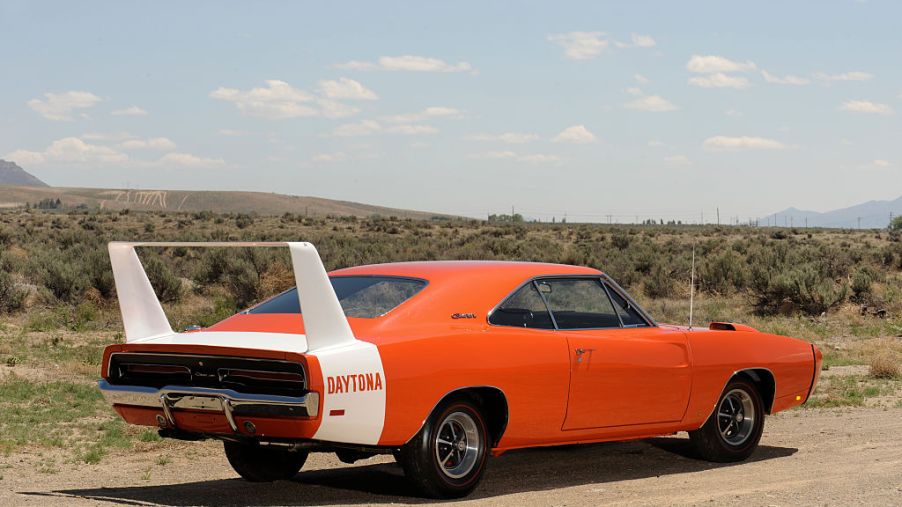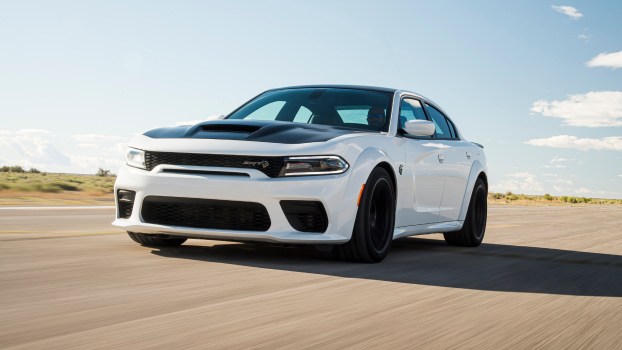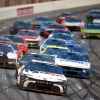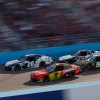
The Dodge Charger Daytona Was so Dominant NASCAR Had to Ban It
The Dodge Charger Daytona was once so powerful and so aggressive that officials determined it would be an unfair advantage on the NASCAR track. This car, to many, was more than a car; it was a dominant powerhouse on four wheels designed to own the competition through every turn and straightaway at Daytona.
If 1969 was before your time, then you might not know the details behind the NASCAR ban and how the Dodge Charger Daytona became the most loved rebel of its time.
Dodge Charger Daytona was designed and named for the Daytona 500
Dodge assembled its best and brightest minds when it set out to produce a car that would dominate at the Daytona 500. The Charger Daytona was born, and its name was intended to remind the competition that it was coming to do one thing: win at Daytona.
The first race this supercar entered was the 1969 Talladega 500, and it owned the track. Richard Brickhouse drove it to victory, albeit in a race that was boycotted by notable drivers such as Buddy Baker, David Pearson, Richard Petty, and Cale Yarborough over tire safety concerns.
Nonetheless, the Dodge Charger Daytona proved it wasn’t all talk and continued to cross first on subsequent race days.
What made the Dodge Charger Daytona such a powerhouse
This beast earned status as an infamous “aero” car. It was a two-door model with a sheet metal cowl over the front grille and a 23-inch tall tail to reduce drag, per Kendall Dodge Chrysler Jeep Ram. Dodge configured two engines, the 426 HEMI V8 and the 440 Magnum V8.
Handling and braking were already a part of the Charger platform. But for this dominant racing variation, Dodge included a rear stabilizer wing, fender-mounted cooling scoops for braking, and a cap over the rear window.
The Dodge Charger Daytona broke records before it was banned
This monster supercar didn’t just win races; it grew a fan base and broke records, as well. With each win — two in 1969 and four in 1970 — Dodge Charger Daytona fans transitioned into full-fledged enthusiasts.
But everything changed at Talladega in 1970.
During testing at the track then known as Alabama International Motor Speedway on March 24, 1970, Buddy Baker broke the 200 mph barrier, peaking at 200.447 mph in his Dodge on the 34th circuit after hitting 200.096 on the 30th. He remained humble afterward, remarking, per the NASCAR Hall of Fame, “Gosh, it’s the best feeling I’ve had in a long, long time. This is something that no one can ever take away from you, being the first guy to run 200 mph on a closed-course circuit.”
NASCAR founder William H.G. France and chief timer and scorer Joe Epton were present for the record-setting run, ensuring they could certify the new speed threshold, and the Dodge was inspected before the test to ensure its legality.
But officials still took notice — and not in a positive way.
Why officials said no more to the Dodge Charger Daytona
The Charger Daytona owned the short-track competition during those dominant 1969 and ’70 seasons, and the Plymouth Superbird quickly joined it as one of NASCAR’s “aero-warriors,” winning eight races. Copycats followed, namely the Ford Torino Talladega and the Mercury Cyclone Spoiler II.
Eventually, the success became too significant in the eyes of NASCAR officials, who promptly enforced new guidelines that essentially banned each model from future racing events. The regulations focused on the wings and nose cones, but NASCAR also cracked down on the use of large displacement engines, limiting them to just 305 cubic inches. For reference, the Dodge Charger Daytona had 426 and 440-cubic-inch engine options.
Essentially, the vehicles had proven too effective relative to the rest of the competition.



